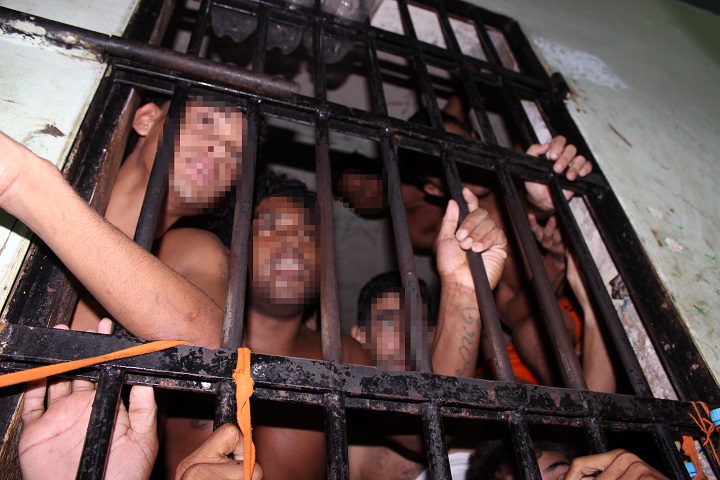Brazil has the world’s 3rd largest prison population

Between December 2014 and June 2016, Brazil imprisoned nearly 100,000 people. As a result, the country is now ranked third among countries in the world with the most people in prison, behind only the United States and China. According to data released by the Ministry of Justice this Friday, 26th, there are 726,712 prisoners in the country, representing an increase of 16.8% compared to the previous result.
Of all these prisoners, 40% are pre-trial detainees and drug trafficking is the crime responsible for most incarcerations: 28% of inmates, or 203,000 people, were convicted of involvement in trafficking. The state with the largest prison population is São Paulo, with 240,000 detainees.
- See the change in the Brazilian prison population
INFOGRAPHIC | CHANGE IN THE BRAZILIAN PRISON POPULATION (2005-2016)
Read more
The number of female prisoners increased considerably from 2014 to 2016, from 33,000 to 42,000. Between 2005 and 2014, the female prison population had already risen sharply, by 10.7% per year, largely as a result of the approval of the Drug Law in 2006.
Overcrowding
At the start of this year, a series of riots triggered one of the worst crises in the Brazilian prison system, affecting primarily the states of Amazonas, Roraima and Rio Grande do Norte. According to data from the National Prison Information Survey (Infopen), these three states have occupancy rates that far exceed their capacity. Amazonas has the highest rate, of 484%, while in Rio Grande do Norte it is 207% and in Roraima, 195%. Overall, the shortfall of prison places in the Brazilian prison system exceeds 358,000 places, which corresponds to nearly 50% of the current prison population.
• See the report from Infopen with data from June 2016, in full
Of the 727,000 prisoners, 64% are black or mixed-race. This figure is higher than the percentage of black or mixed-race people in the Brazilian population, which is 53%. According to Rafael Custódio, coordinator of the Institutional Violence program at Conectas, “the profile of the Brazilian prison population demonstrates the selectivity of prisons in Brazil. Most are black, poor and involved in crimes that could be handled with alternative measures to imprisonment, namely drug trafficking. This can be attributed to a long policy of exclusion that could be mitigated by a reform of the Drug Law or by the use of custody hearings, which would reduce the number of pre-trial detainees”.
INFOGRAPHIC | World’s largest prison populations
SUMMARY OF DATA – INFOPEN/2016
- 40% of prisoners are pre-trial detainees, i.e. they were not convicted by an appeals court
- 28% are imprisoned for crimes related to drug trafficking; among women, the percentage of prisoners for this crime is 62%
- 65% of the convicted prisoners are imprisoned for non-violent crimes, such as drug trafficking, robbery and theft
- São Paulo is the state with the highest number of prisoners: 240,000
- 64% of Brazilian prisoners are black
- the female prison population is 42,355; there are only 32 gynecologists contracted to cater to all the demand from the prison system
- 12% of prisoners have access to education
- 15% of the Brazilian prison population have access to employment






